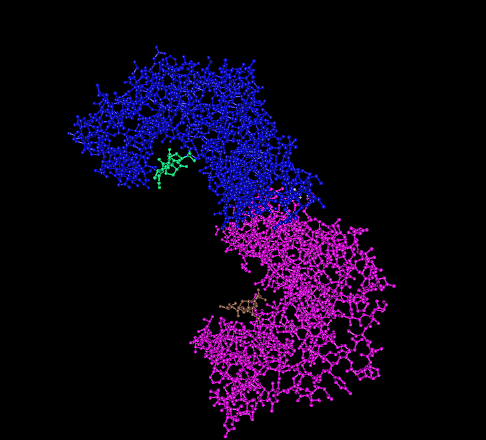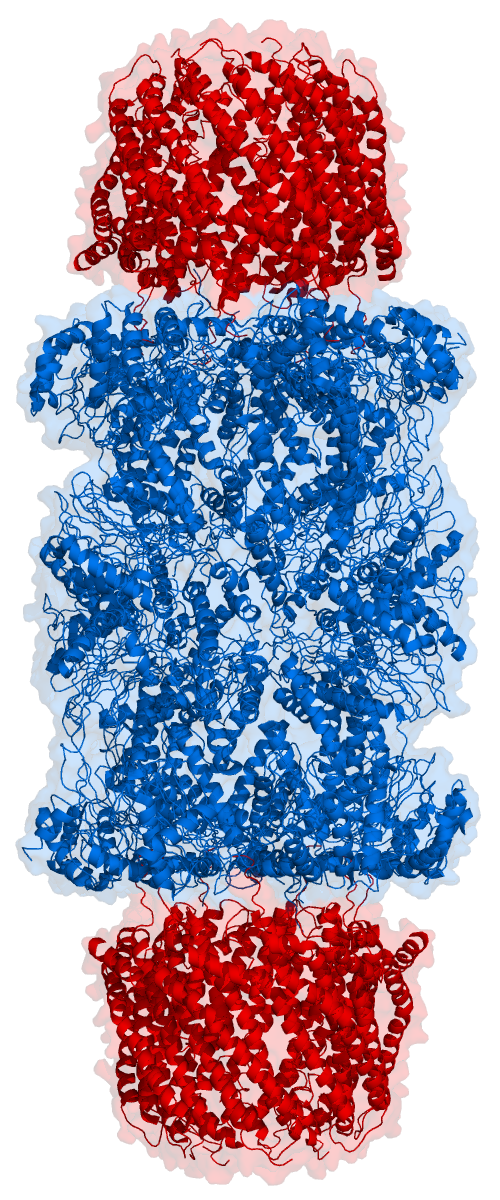|
AANAT (gene)
''AANAT'' is a gene that encodes an enzyme aralkylamine N-acetyltransferase. It is the key regulator of day-night cycle (circadian rhythm). It is found in all animals. In humans it is present on chromosome 17, in chimpanzees chromosome 17, in mouse and sheep chromosome 11, in rat chromosome 10, and in chicken chromosome 18. Function The protein encoded by this gene belongs to the acetyltransferase superfamily. It is the penultimate enzyme in melatonin synthesis and controls the night/day rhythm in melatonin production in the vertebrate pineal gland. Melatonin is essential for the function of the circadian clock that influences activity and sleep. This enzyme is regulated by cAMP-dependent phosphorylation that promotes its interaction with 14-3-3 protein 14-3-3 proteins are a family of conserved regulatory molecules that are expressed in all eukaryotic cells. 14-3-3 proteins have the ability to bind a multitude of functionally diverse signaling proteins, including kinases, ph ... [...More Info...] [...Related Items...] OR: [Wikipedia] [Google] [Baidu] |
Aralkylamine N-acetyltransferase
Aralkylamine ''N''-acetyltransferase (AANAT) (), also known as arylalkylamine ''N''-acetyltransferase or serotonin ''N''-acetyltransferase (SNAT), is an enzyme that is involved in the day/night rhythmic production of melatonin, by modification of serotonin. It is in humans encoded by the ~2.5 kb '' AANAT gene'' containing four exons, located on chromosome 17q25. The gene is translated into a 23 kDa large enzyme. It is well conserved through evolution and the human form of the protein is 80 percent identical to sheep and rat AANAT. It is an acetyl-CoA-dependent enzyme of the GCN5-related family of ''N''-acetyltransferases (GNATs). It may contribute to multifactorial genetic diseases such as altered behavior in sleep/wake cycle and research is on-going with the aim of developing drugs that regulate AANAT function. Nomenclature The systematic name of this enzyme class is acetyl-CoA:2-arylethylamine N-acetyltransferase. Other names in common use include: * AANAT * Arylalkylam ... [...More Info...] [...Related Items...] OR: [Wikipedia] [Google] [Baidu] |
Acetyltransferase
Acetyltransferase (or transacetylase) is a type of transferase enzyme that transfers an acetyl group. Examples include: * Histone acetyltransferases including CBP histone acetyltransferase * Choline acetyltransferase * Chloramphenicol acetyltransferase * Serotonin N-acetyltransferase * NatA Acetyltransferase * NatB acetyltransferase See also * Acyltransferase * Acetylation : In organic chemistry, acetylation is an organic esterification reaction with acetic acid. It introduces an acetyl group into a chemical compound. Such compounds are termed ''acetate esters'' or simply '' acetates''. Deacetylation is the oppo ... External links * Transferases {{enzyme-stub ... [...More Info...] [...Related Items...] OR: [Wikipedia] [Google] [Baidu] |
Melatonin
Melatonin is a natural product found in plants and animals. It is primarily known in animals as a hormone released by the pineal gland in the brain at night, and has long been associated with control of the sleep–wake cycle. In vertebrates, melatonin is involved in synchronizing circadian rhythms, including sleep–wake timing and blood pressure regulation, and in control of seasonal rhythmicity including reproduction, fattening, moulting and hibernation. Many of its effects are through activation of the melatonin receptors, while others are due to its role as an antioxidant. In plants, it functions to defend against oxidative stress. It is also present in various foods. Melatonin was discovered in 1958. In addition to its role as a natural hormone, melatonin is used as a dietary supplement and medication in the treatment of sleep disorders such as insomnia and circadian rhythm sleep disorders; for information on melatonin as a supplement and medication, see the mel ... [...More Info...] [...Related Items...] OR: [Wikipedia] [Google] [Baidu] |
Pineal Gland
The pineal gland, conarium, or epiphysis cerebri, is a small endocrine gland in the brain of most vertebrates. The pineal gland produces melatonin, a serotonin-derived hormone which modulates sleep patterns in both circadian and seasonal cycles. The shape of the gland resembles a pine cone, which gives it its name. The pineal gland is located in the epithalamus, near the center of the brain, between the two hemispheres, tucked in a groove where the two halves of the thalamus join. The pineal gland is one of the neuroendocrine secretory circumventricular organs in which capillaries are mostly permeable to solutes in the blood. Nearly all vertebrate species possess a pineal gland. The most important exception is a primitive vertebrate, the hagfish. Even in the hagfish, however, there may be a "pineal equivalent" structure in the dorsal diencephalon. The lancelet '' Branchiostoma lanceolatum'', an early chordate which is a close relative to vertebrates, also lacks a ... [...More Info...] [...Related Items...] OR: [Wikipedia] [Google] [Baidu] |
Circadian Clock
A circadian clock, or circadian oscillator, is a biochemical oscillator that cycles with a stable phase and is synchronized with solar time. Such a clock's ''in vivo'' period is necessarily almost exactly 24 hours (the earth's current solar day). In most living things, internally synchronized circadian clocks make it possible for the organism to anticipate daily environmental changes corresponding with the day–night cycle and adjust its biology and behavior accordingly. The term circadian derives from the Latin ''circa'' (about) ''dies'' (a day), since when taken away from external cues (such as environmental light), they do not run to exactly 24 hours. Clocks in humans in a lab in constant low light, for example, will average about 24.2 hours per day, rather than 24 hours exactly. The normal body clock oscillates with an endogenous period of exactly 24 hours, it entrains, when it receives sufficient daily corrective signals from the environment, primarily daylight and darkne ... [...More Info...] [...Related Items...] OR: [Wikipedia] [Google] [Baidu] |
Cyclic Adenosine Monophosphate
Cyclic adenosine monophosphate (cAMP, cyclic AMP, or 3',5'-cyclic adenosine monophosphate) is a second messenger important in many biological processes. cAMP is a derivative of adenosine triphosphate (ATP) and used for intracellular signal transduction in many different organisms, conveying the cAMP-dependent pathway. History Earl Sutherland of Vanderbilt University won a Nobel Prize in Physiology or Medicine in 1971 "for his discoveries concerning the mechanisms of the action of hormones", especially epinephrine, via second messengers (such as cyclic adenosine monophosphate, cyclic AMP). Synthesis Cyclic AMP is synthesized from ATP by adenylate cyclase located on the inner side of the plasma membrane and anchored at various locations in the interior of the cell. Adenylate cyclase is ''activated'' by a range of signaling molecules through the activation of adenylate cyclase stimulatory G ( Gs)-protein-coupled receptors. Adenylate cyclase is ''inhibited'' by agonists of adenylate ... [...More Info...] [...Related Items...] OR: [Wikipedia] [Google] [Baidu] |
Phosphorylation
In chemistry, phosphorylation is the attachment of a phosphate group to a molecule or an ion. This process and its inverse, dephosphorylation, are common in biology and could be driven by natural selection. Text was copied from this source, which is available under a Creative Commons Attribution 4.0 International License. Protein phosphorylation often activates (or deactivates) many enzymes. Glucose Phosphorylation of sugars is often the first stage in their catabolism. Phosphorylation allows cells to accumulate sugars because the phosphate group prevents the molecules from diffusing back across their transporter. Phosphorylation of glucose is a key reaction in sugar metabolism. The chemical equation for the conversion of D-glucose to D-glucose-6-phosphate in the first step of glycolysis is given by :D-glucose + ATP → D-glucose-6-phosphate + ADP :ΔG° = −16.7 kJ/mol (° indicates measurement at standard condition) Hepatic cells are freely permeable to glucose, an ... [...More Info...] [...Related Items...] OR: [Wikipedia] [Google] [Baidu] |
14-3-3 Protein
14-3-3 proteins are a family of conserved regulatory molecules that are expressed in all eukaryotic cells. 14-3-3 proteins have the ability to bind a multitude of functionally diverse signaling proteins, including kinases, phosphatases, and transmembrane receptors. More than 200 signaling proteins have been reported as 14-3-3 ligands. Elevated amounts of 14-3-3 proteins in cerebrospinal fluid may be a sign of Creutzfeldt–Jakob disease. Properties Seven genes encode seven distinct 14-3-3 proteins in most mammals (See ''Human genes'' below) and 13-15 genes in many higher plants, though typically in fungi they are present only in pairs. Protists have at least one. Eukaryotes can tolerate the loss of a single 14-3-3 gene if multiple genes are expressed, but deletion of all 14-3-3s (as experimentally determined in yeast) results in death. 14-3-3 proteins are structurally similar to the Tetratrico Peptide Repeat (TPR) superfamily, which generally have 9 or 10 alpha helices, an ... [...More Info...] [...Related Items...] OR: [Wikipedia] [Google] [Baidu] |
Proteasome
Proteasomes are protein complexes which degrade unneeded or damaged proteins by proteolysis, a chemical reaction that breaks peptide bonds. Enzymes that help such reactions are called proteases. Proteasomes are part of a major mechanism by which cells regulate the concentration of particular proteins and degrade misfolded proteins. Proteins are tagged for degradation with a small protein called ubiquitin. The tagging reaction is catalyzed by enzymes called ubiquitin ligases. Once a protein is tagged with a single ubiquitin molecule, this is a signal to other ligases to attach additional ubiquitin molecules. The result is a ''polyubiquitin chain'' that is bound by the proteasome, allowing it to degrade the tagged protein. The degradation process yields peptides of about seven to eight amino acids long, which can then be further degraded into shorter amino acid sequences and used in synthesizing new proteins. Proteasomes are found inside all eukaryotes and archaea, and in some ... [...More Info...] [...Related Items...] OR: [Wikipedia] [Google] [Baidu] |
Delayed Sleep Phase Syndrome
Delayed sleep phase disorder (DSPD), more often known as delayed sleep phase syndrome and also as delayed sleep–wake phase disorder, is a delaying of a person's circadian rhythm (biological clock) compared to those of societal norms. The disorder affects the timing of biological rhythms including sleep, peak period of alertness, core body temperature, and hormonal cycles. The diagnosis of this disorder is currently a point of contention among specialists of sleep disorders. Many insomnia-related disorders can present significantly differently between patients, and circadian rhythm disorders and melatonin related disorders are not well understood by modern medical science. The orexin system was identified only in 1998, yet it appears intimately implicated in human sleep-wake systems. Evidence for the plasticity of human circadian rhythm cycles has been provided by multiple studies. In one example, several dozen volunteers spent many months underground in a French cave, ... [...More Info...] [...Related Items...] OR: [Wikipedia] [Google] [Baidu] |




